Emily Damment heads to Alex Smith Guns in Winchester to find out more about the trade that underpins the entire shooting industry
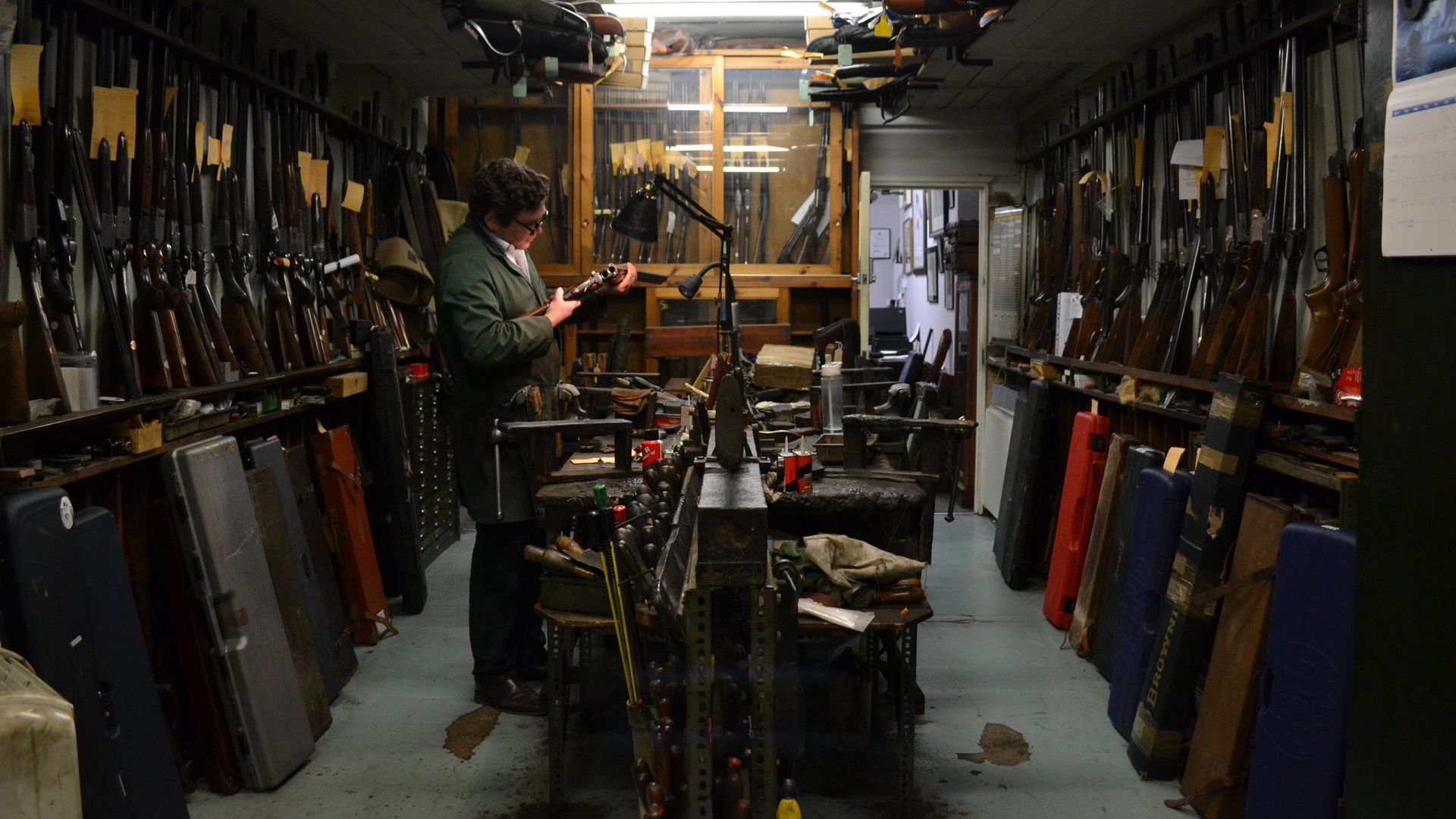 credit: Emily Damment
credit: Emily Damment
I just love proper gunsmith’s workshops. You know the sort – intriguing metal parts crowding every surface; old wooden-handled tools tucked into even older wooden tubs; Bunsen burners emitting a soft, blue glow.
T. R. White Guns in Stafford is one such workshop, and Alex Smith Guns in Winchester is another. I had the pleasure of nosing around Alex Smith’s workshop recently, and finding out more about his career and how he ended up – much like the rest of us – consumed by this niche little industry.
Like myself, Alex was not brought up with guns. Unlike myself, he had rather an interesting childhood, spending his younger years living in a big house with both sets of grandparents, plus his parents and brother; it’s not the kind of arrangement you come across very often nowadays. Even more interesting is the fact that, while the entire family went firmly down the military career route, Alex was the single, notable exception. He had other ideas about his future.
“I rebelled a bit,” he tells me. “They were all military, and then they all went down the farming route, and after a bit, the family went their separate ways. I was interested in the countryside and guns, and so I went to an airgun club, that being the only way I could get my hands on one! I actually managed to turn up on the wrong night and the rifle club was there instead, so I had a go at .22 prone target shooting, which I still enjoy to this day.
“An old farmer was watching and said to me, ‘you’re pretty good at this, why don’t you come and have another go?’. My involvement in shooting grew from there, really. We became friends and he really took me under his wing. He took me pigeon shooting and then game shooting, and that’s where I met the owner of B. E. Chaplin Gunmakers, which is what this place used to be called.”
He gestures around him at what is now a dedicated gunsmiths under Alex’s own name, with the only addition to Alex’s services being the sale of guns and cartridges. It had been ‘Chaplins’ since 1932, when Bernard Chaplin moved down to Winchester from London and set up the shop and workshop. Alongside guns and gunsmithing services, B. E. Chaplin also sold high-end country clothing, and the whole operation stretched over four floors.
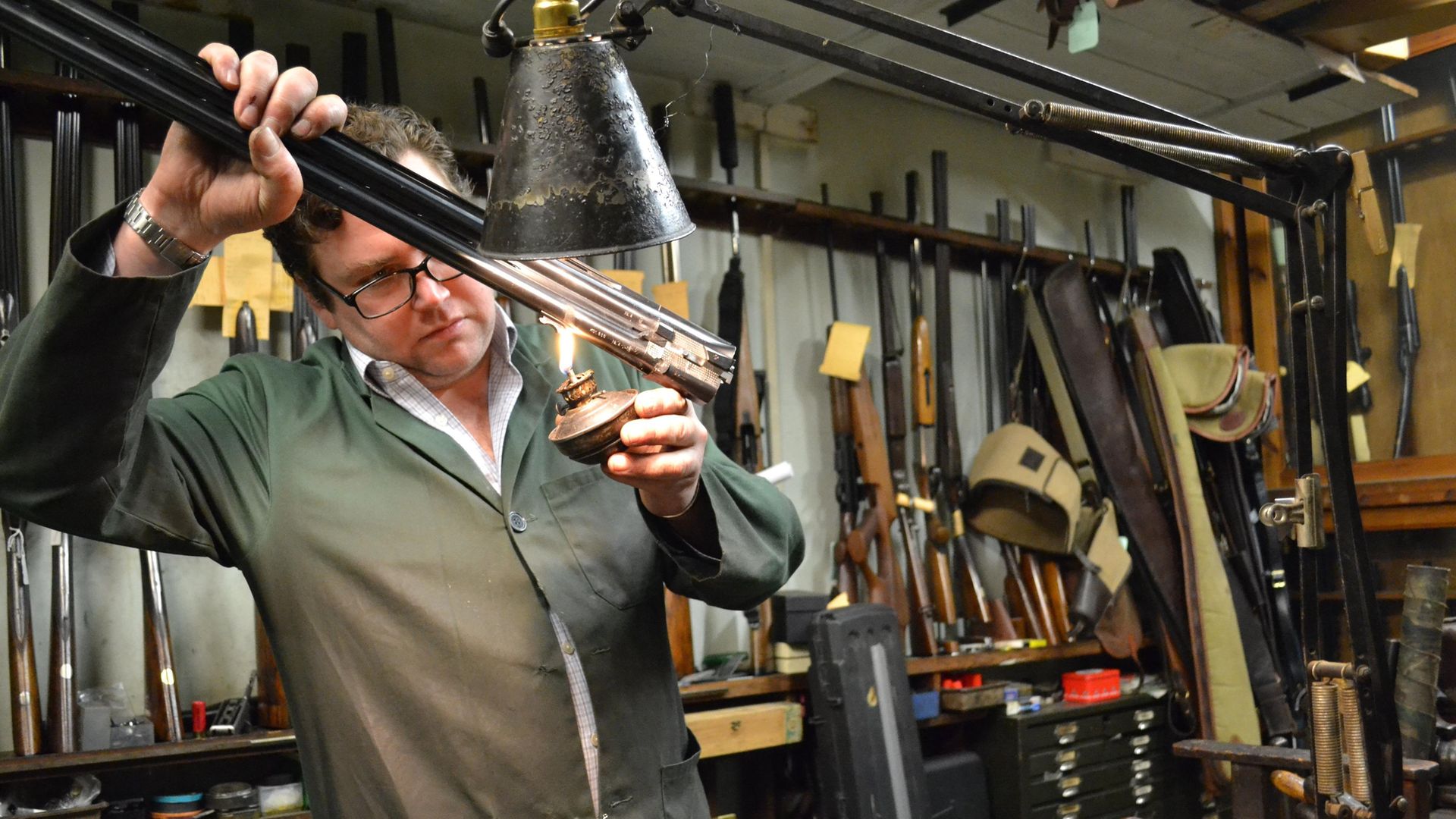 credit: Emily Damment
credit: Emily Damment
“It took off for them,” says Alex. “Back in the 1900s, there were a lot of gunshops in Winchester, in most towns probably. There was a bigger need for them because everyone carried small arms. Anyway, I met the owner of B. E. Chaplin through my farmer friend at a shoot, and he told me they were looking for an apprentice. I was always into hands-on engineering in school; I made steam engines and boring things like that. I was one of those geeks who went to metal workshop. I went for a couple of interviews at Chaplins, a practical one and a verbal one, got short-listed for the role, and then received a letter through the post saying ‘come and have a go’. Prior to that I’d done two years at Sparsholt college, studying gamekeeping. That was also a result of befriending the farmer and being introduced to the country lifestyle.”
Alex pauses to pour us both a small glass of port – my kind of interviewee – and I reflect on the tale I’ve just been told. The routes into our sport are many and varied, but I particularly like this story, which at its core is about the kindness of a stranger... and, I suppose, Alex’s inability to read the airgun club’s schedule accurately! When I ask him later what he likes most about our industry, the answer is as I’ve come to expect: the people. It’s the same answer I would give, too.
We resume our chat, Alex with half an eye on a live-streamed online auction. There’s a very expensive-looking car on the screen; the bidding is over a million already. I suspect Alex is waiting for any nice-looking old guns to appear, judging by his already rather vast collection.
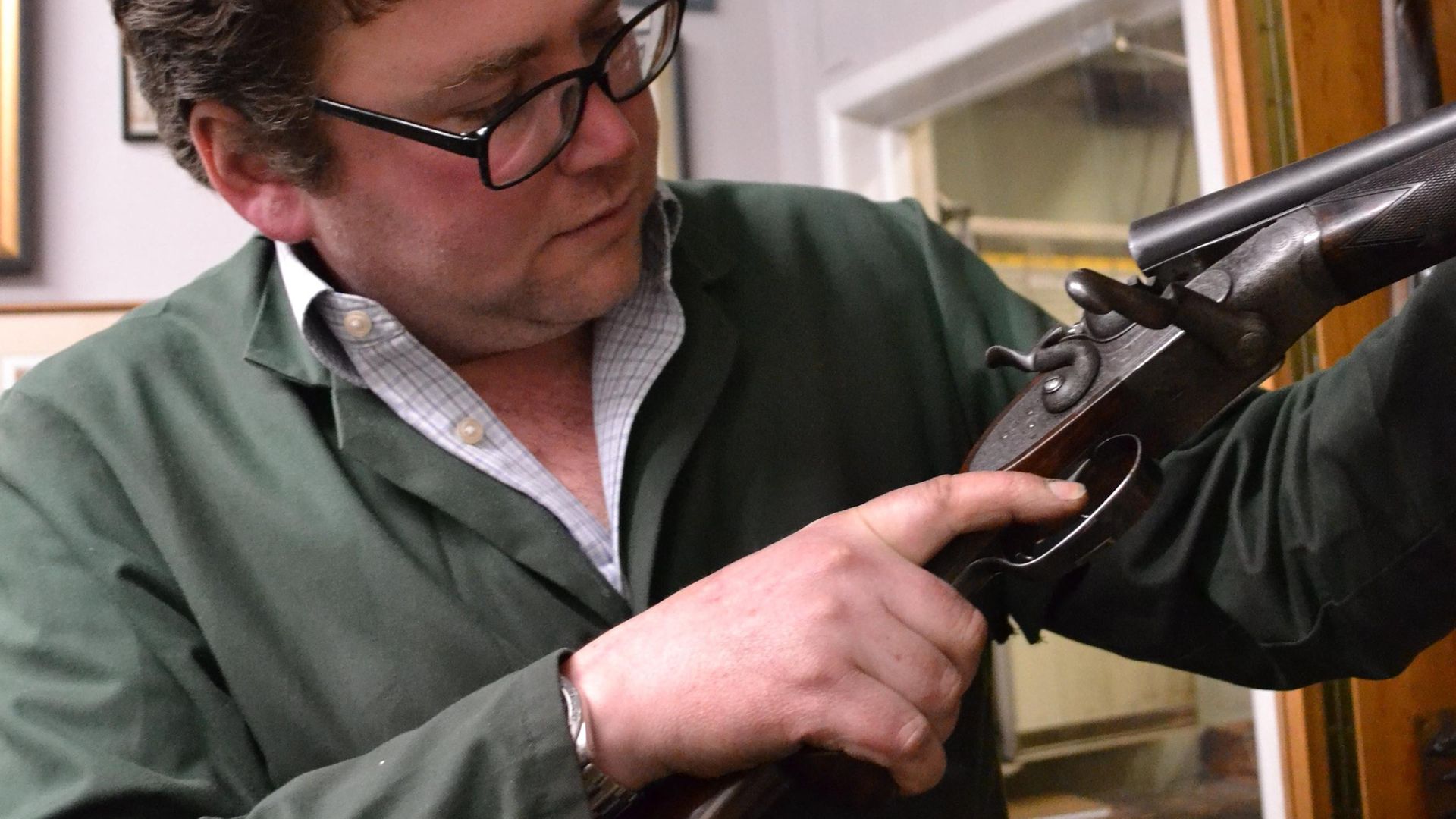 credit: Emily Damment
credit: Emily Damment
“This one is really special,” he says, extracting a side-by-side hammer gun from the cabinet. He explains that only five were made, and only the whereabouts of three are known, his being one of them. It’s a 32" Churchill Live Pigeon Gun ‘Monte Carlo’ Model.
“After the live pigeons came those glass balls, and eventually that evolved into clay pigeons,” he said. “I shoot game and pigeons, I also hunt and fish, but I do love clay shooting and I do a lot of it, especially in the summer. I shoot Sporting, FITASC, Sportrap and Compak, so mainly the Sporting disciplines. I have, however, customised a DT10 to shoot ABT and Helice with. Helice is a new passion of mine. It is so different from normal Sporting clays, a real test. I’ve altered the barrels, altered the stocks, engraved the trigger guard... made it look great.
“I won’t touch competition clays from September until about February, because that’s my busiest time of year in the workshop. On a typical day, I get in about 8am, do some paperwork, and then I’m at my workbench, often until gone 8pm when it’s the game season.”
I’m curious to know how long it takes to become a gunsmith. Considering the complexity of the various actions and mechanisms in guns, the sheer variety, I am expecting it to be a lengthy training process, and I’m not wrong.
“I was an apprentice for six years,” he explains. “It was actually supposed to be five, but working the shop at the same time – dealing with customers, selling guns and clothing – meant I couldn’t put all my time into it. When I finished the apprenticeship, I became a general repairer, which was more valuable than anything; you touch on every single gun. gaining a little bit of knowledge on everything. There aren’t many guns that I’ll say no to now.
“I’d been working here for 17 years when the old owners decided to retire. For 17 years I’d stood at that bench, on my vice. I’ve tried moving to a different vice, to a different bench, but it just felt so alien and wrong to me... so, I’ve now been standing at the same bench for 23 years!”
We both exhale, and laugh. When the B. E. Chaplin team retired, Alex bought the name, stayed on, and started
his own business in the place he’d learned his trade. He took on everything apart from the shop selling clothing and sporting wares, preferring to condense the business down slightly.
“In hindsight, that was a good decision,” he tells me. “I took over in 2019, and then lockdown happened which of course had an effect on retail. I just carried on; I have a lot of the same clientele, which is nice, and I work alone. I changed the name but other than
that the only real change is that I can be a lot more personable with the customers because it’s not a big company any more. Instead of ‘we’ve repaired your gun’, now it’s ‘I’ve repaired your gun’.”
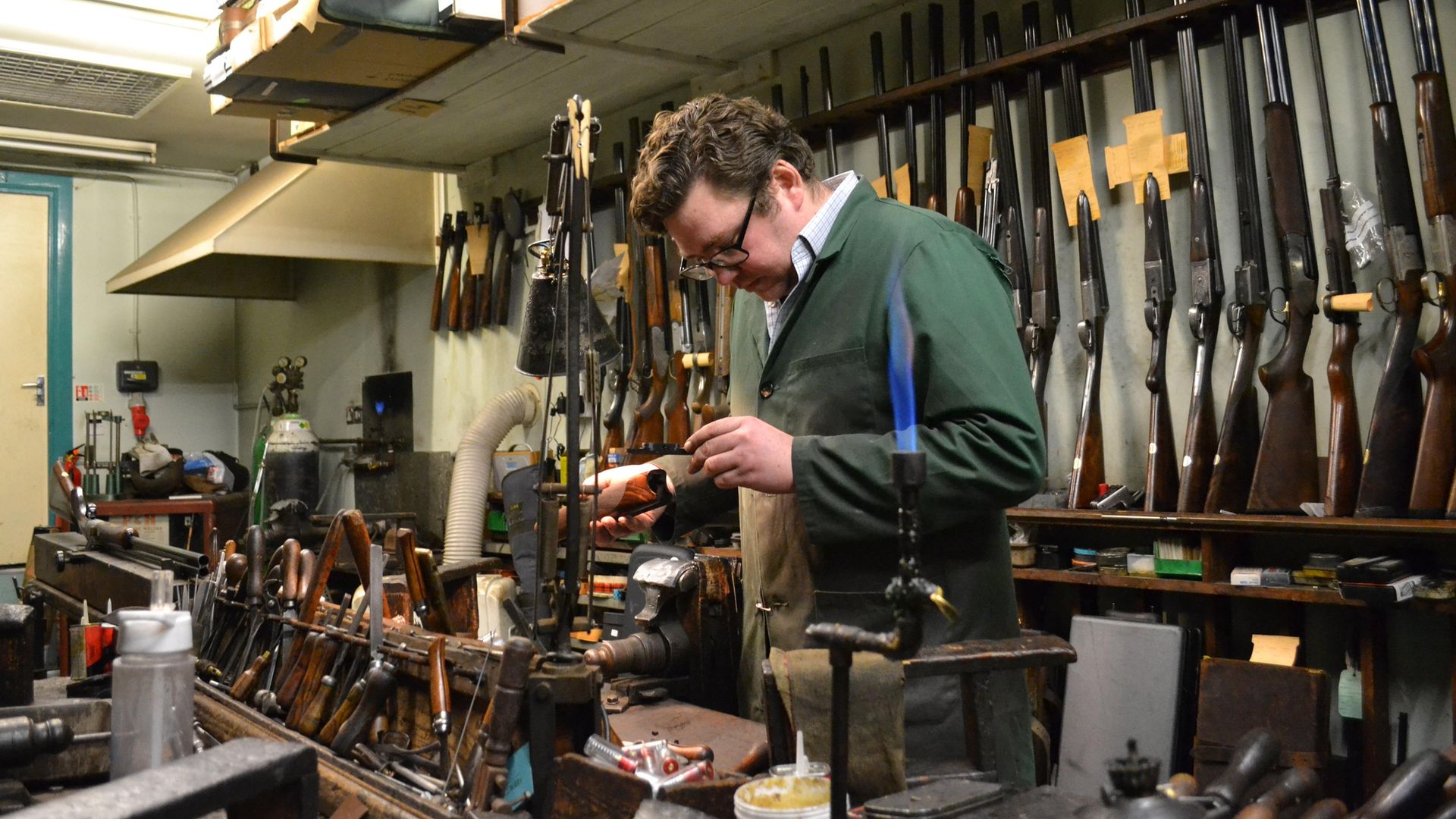 credit: Emily Damment
credit: Emily Damment
Like all successful people in this industry, Alex clearly has a passion, and that passion is engineering. It’s not so much about the gun as the way the gun works. Browsing through his own collection, he removes the side of one of the actions to show me the inner workings.
“Just look at it!” he exclaims. He can see from my face that I am trying and failing to see something more than a scramble of metal parts, and smiles wryly, resigned to the fact that he’ll have to appreciate the marvel of this gun’s internal mechanisms alone. But then that’s why Alex is a gunsmith, and I’m a journalist. I get excited about grammar and interesting sentence structures and stuff.
To conclude what has been a thoroughly pleasant interview, I want to find out two things: firstly, the part of his job that he enjoys the most; and secondly, as is customary for Clay Shooter interviews, what his favourite cheese is.
He answers the first question without pause: “It’s satisfying the customers; making people happy; making sure their pride and joy continues to work. Whether it’s a 1905 Purdey or a Beretta Silver Pigeon, it really doesn’t matter; if the customer is satisfied and happy, I am too. Seeing nice guns is great, but I give them all the same level of care and attention.”
It’s a good answer to finish with. Oh, and to answer the second question, his favourite cheese is brie. Good man.
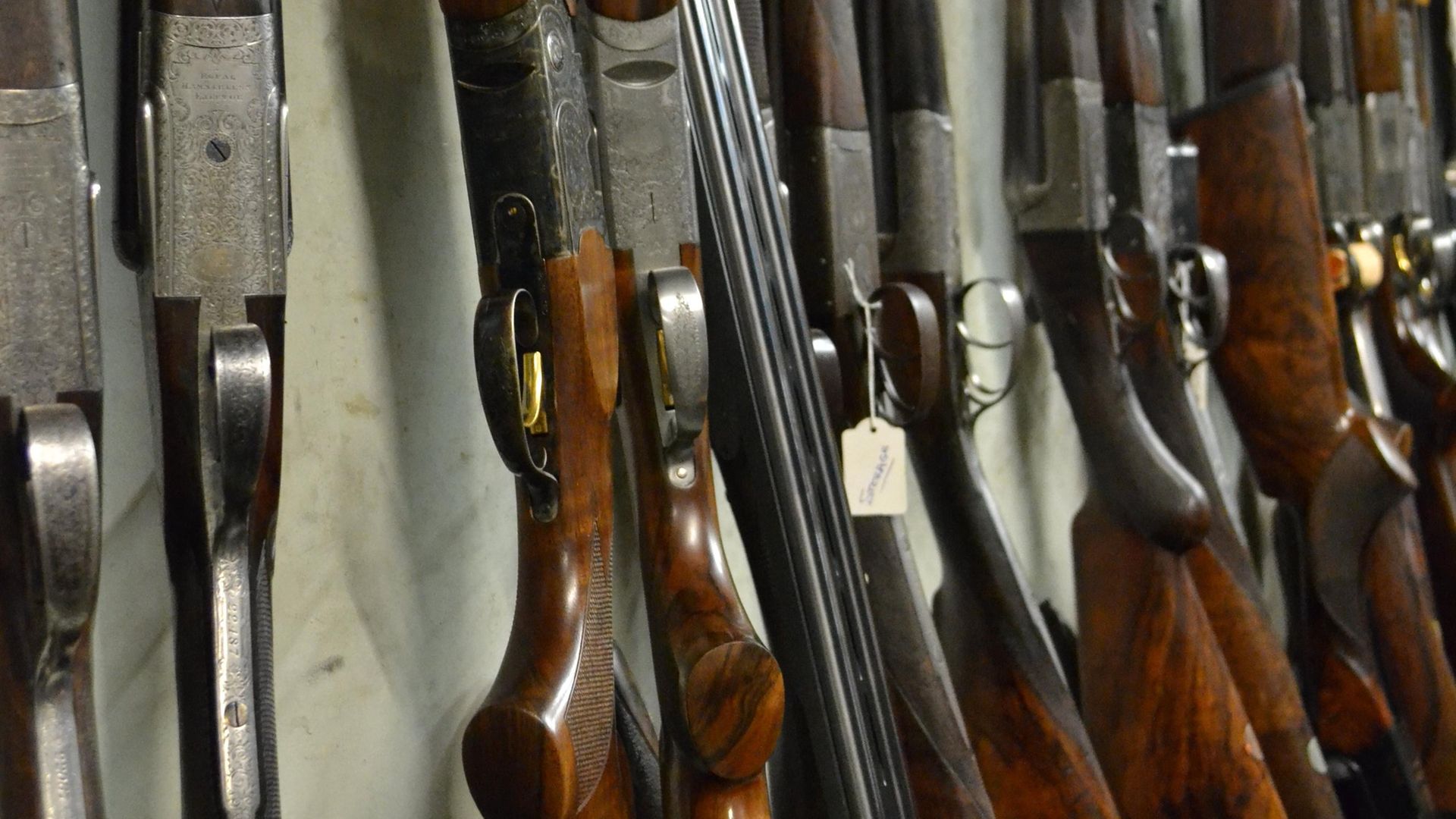 credit: Emily Damment
credit: Emily Damment